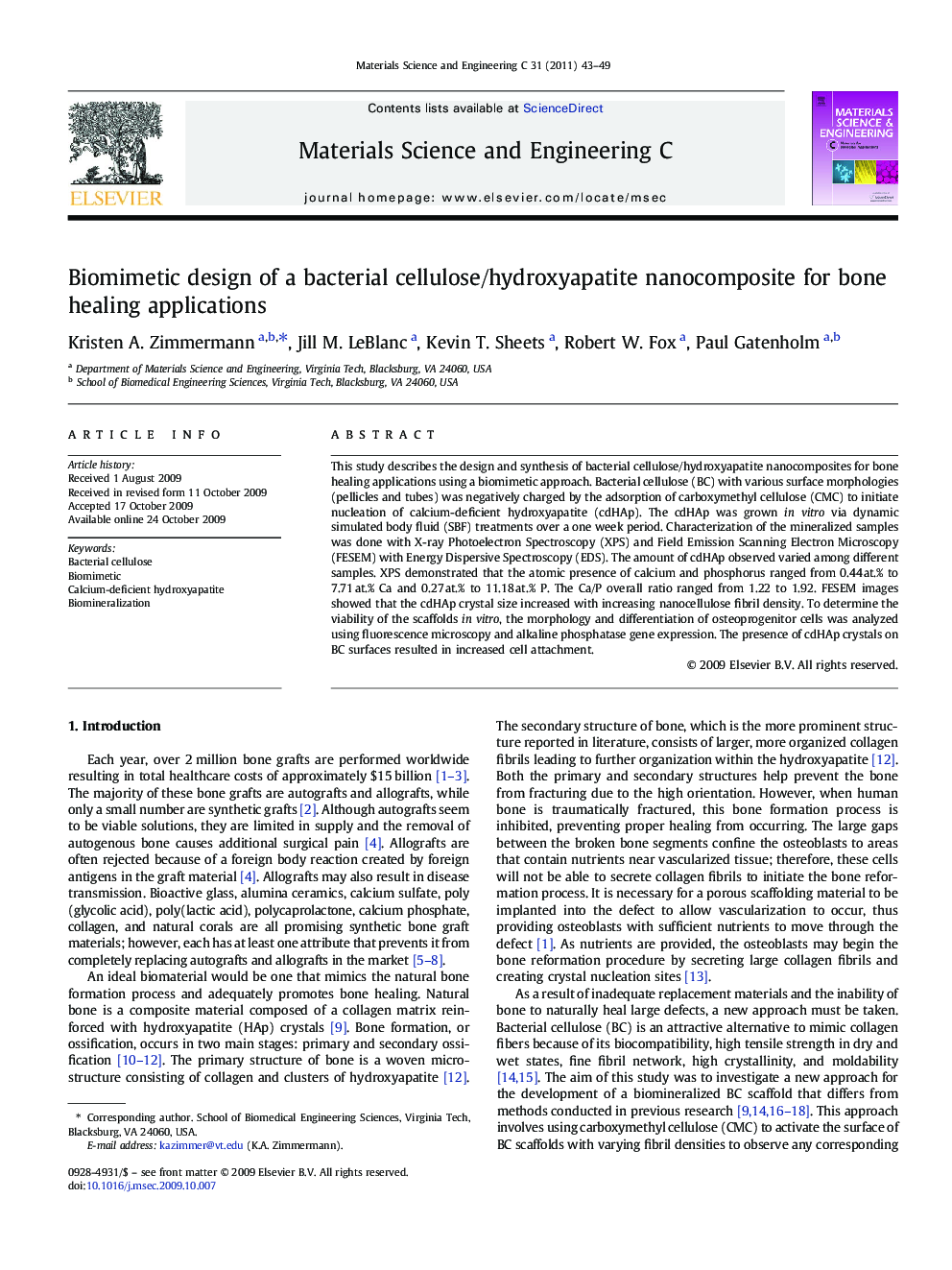| Article ID | Journal | Published Year | Pages | File Type |
|---|---|---|---|---|
| 1429855 | Materials Science and Engineering: C | 2011 | 7 Pages |
This study describes the design and synthesis of bacterial cellulose/hydroxyapatite nanocomposites for bone healing applications using a biomimetic approach. Bacterial cellulose (BC) with various surface morphologies (pellicles and tubes) was negatively charged by the adsorption of carboxymethyl cellulose (CMC) to initiate nucleation of calcium-deficient hydroxyapatite (cdHAp). The cdHAp was grown in vitro via dynamic simulated body fluid (SBF) treatments over a one week period. Characterization of the mineralized samples was done with X-ray Photoelectron Spectroscopy (XPS) and Field Emission Scanning Electron Microscopy (FESEM) with Energy Dispersive Spectroscopy (EDS). The amount of cdHAp observed varied among different samples. XPS demonstrated that the atomic presence of calcium and phosphorus ranged from 0.44 at.% to 7.71 at.% Ca and 0.27 at.% to 11.18 at.% P. The Ca/P overall ratio ranged from 1.22 to 1.92. FESEM images showed that the cdHAp crystal size increased with increasing nanocellulose fibril density. To determine the viability of the scaffolds in vitro, the morphology and differentiation of osteoprogenitor cells was analyzed using fluorescence microscopy and alkaline phosphatase gene expression. The presence of cdHAp crystals on BC surfaces resulted in increased cell attachment.
